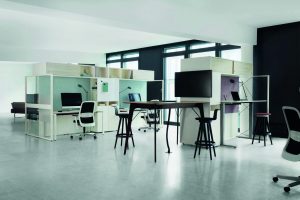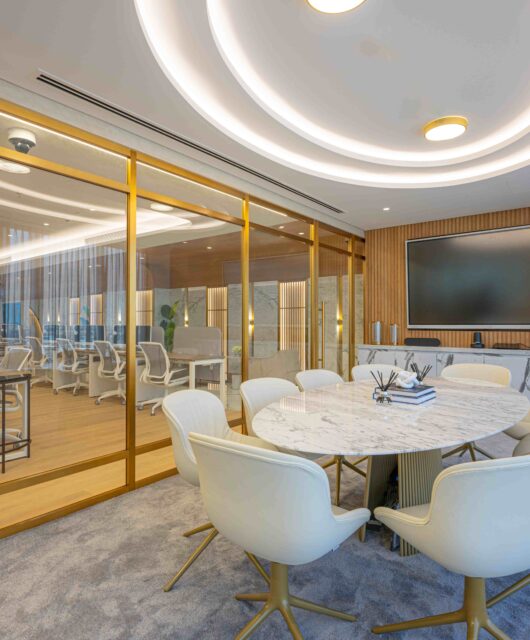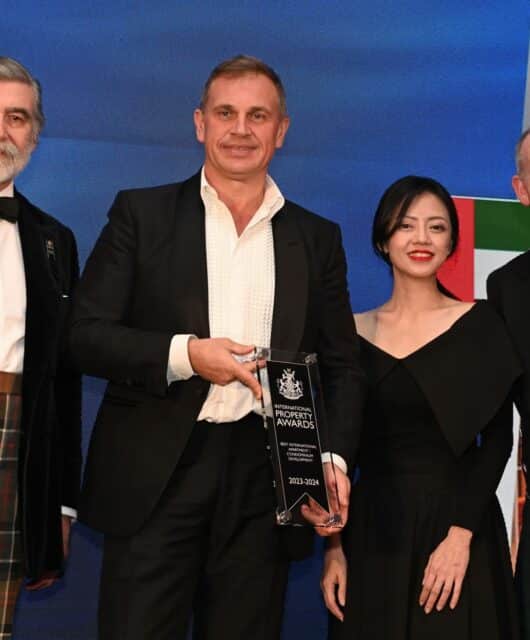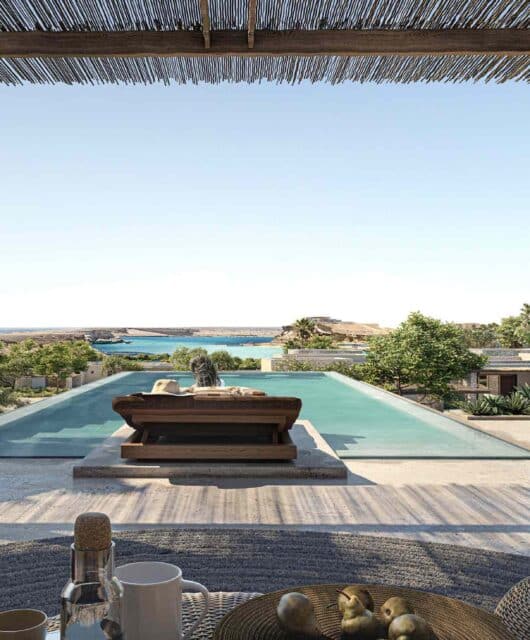The Shape of the Things to come
What design trends can we expect to see in 2017? The team at Dubai-based architectural firm Godwin Austen Johnson share their insights into the year ahead…
Modularity – Modern furniture and lighting fixtures go retro this year, says senior interior designer Elie Choucair. “At the recent Milan furniture exhibition we were delighted to see a lot of retro furniture pieces on display,” he says. “The modernisation of technology and production processes today are much more efficient and cost-effective, so it’s great to see beautiful old pieces being given a new lease of life.”
Elie also believes modularity will be popular this year, challenging conventional design concepts and room layouts. “Flexible modular furniture allows us to mix and match the elements to create our own custom pieces. A sofa, for example, does not have to be designed to go against a back wall. “Created from a combination of modular seat cushions, vertical screens and finished off with free-standing coffee tables and pouffes, it can be arranged to create a comfortable central hub in the middle of the room.”
Modular design is not only functional but is also playful, lending itself to a dynamic, ever evolving ambience.
Embracing change – If one thing is certain in business, it’s that nothing stays the same – and with change comes the need for flexibility. Today’s workforce is fully functional with a laptop, a smartphone and a place to share ideas, making the need fora rigid cellular office area with designated desks largely redundant.
Many companies are rethinking their office setups and how they are being used.  Changing market conditions and an increasingly mobile new generation of employees are starting to shape the workplace in new and exciting ways with idea walls, reconfigurable soft furniture and communal social spaces.“The shift from traditional workplace design is finally gathering pace here in the region, with more emphasis on fluid, project based planning,” says Kathryn Brown, a senior interior designer.
Changing market conditions and an increasingly mobile new generation of employees are starting to shape the workplace in new and exciting ways with idea walls, reconfigurable soft furniture and communal social spaces.“The shift from traditional workplace design is finally gathering pace here in the region, with more emphasis on fluid, project based planning,” says Kathryn Brown, a senior interior designer.
“These comprise different work settings, from solo working to bench desking and soft seating grouped around collaboration rooms.” It’s far easier to move people than desks so the design must be flexible enough to enable spaces to be adapted to suit a variety of purposes. Teams expand, contract and relocate– cellular spaces can be multifunctional without ownership.
Intuitively designed schools – A high-quality design that is rooted in the community and that facilitates learning will continue to gain ground in the next few years, according to partner Jason Burnside.“Children’s primary education is a constantly evolving science, which means that school facilities need to be adaptable and flexible. The design of the physical environment and the use of the space plays a crucial part in the experiences of pupils and teachers, and this will be a key focus when designing schools in the future.”  Schools are much more than just educational facilities – they are places where youngsters grow, play, socialise and share. It’s not just about sitting in a classroom – kids of all ages want to go out and play, interact and collaborate with their friends and this will be shaping how schools are designed going forwards. Jason believes the best-designed schools of the future will be those that enable and encourage youngsters to interact with their environments in a more meaningful way. “You have to consider the practical aspects such as durability, function and user flow,” he says “How the children will move around the school is key to intelligent design.”
Schools are much more than just educational facilities – they are places where youngsters grow, play, socialise and share. It’s not just about sitting in a classroom – kids of all ages want to go out and play, interact and collaborate with their friends and this will be shaping how schools are designed going forwards. Jason believes the best-designed schools of the future will be those that enable and encourage youngsters to interact with their environments in a more meaningful way. “You have to consider the practical aspects such as durability, function and user flow,” he says “How the children will move around the school is key to intelligent design.”
Attracting younger travellers – According to partner Simon Chambers, the hospitality industry has undergone a substantial transformation in the past few years, one that has largely being driven by twenty and thirty-somethings.
As the millennial generation starts to make up a larger proportion of hotel guests their demands and preferences are clearly quite different from the generations before them,” he says.
“For them, what’s important is value for money. Large guest rooms are not as important as high-speed internet – they just want functional, uncluttered spaces. Simon believes that in the next few years, hotels will spring up to cater specifically to this demographic.
“Millennial guests want nothing more than a convenient place to stay that is digitally connected and provides comfort and choice rather than a luxurious experience. Designs, then, are highly flexible and modern but with a strong sense of style.” He adds: “Everything from the creation of social spaces and the visual identity of the property is now being considered to appeal to this generation.”
Circadian lighting – There is a greater emphasis today on the role lighting can play in fostering health and wellbeing, particularly with regard to LEDs. For instance, power supplies can be improved to reduce or eliminate flicker, which is a common cause of headaches.
“We tend to underestimate the importance of light on our wellbeing and just how much the light/dark cycle, or circadian rhythm, affects our moods,” says lighting specialist Regina Santos. “The availability of tuneable white light fixtures, the improvement of lighting control systems and the connectivity that allows people to have access to information and more control of their environment are just some of the key trends right now.” Flexible lighting in homes and at the workplace is set to become the norm.
“There will be a greater emphasis on referencing nature, which has a significant physiological impact on our bodies, through the use of colour-changing fixtures.“These can mimic the daylight cycle using different colour temperatures during the day and warm, low-level lighting at night time to prepare our bodies for sleep,” says Regina, who also believes we will see a greater reliance on apps to control our lit environment via our mobiles on producing comfortable and dynamic lighting schemes both inside and out<! >







